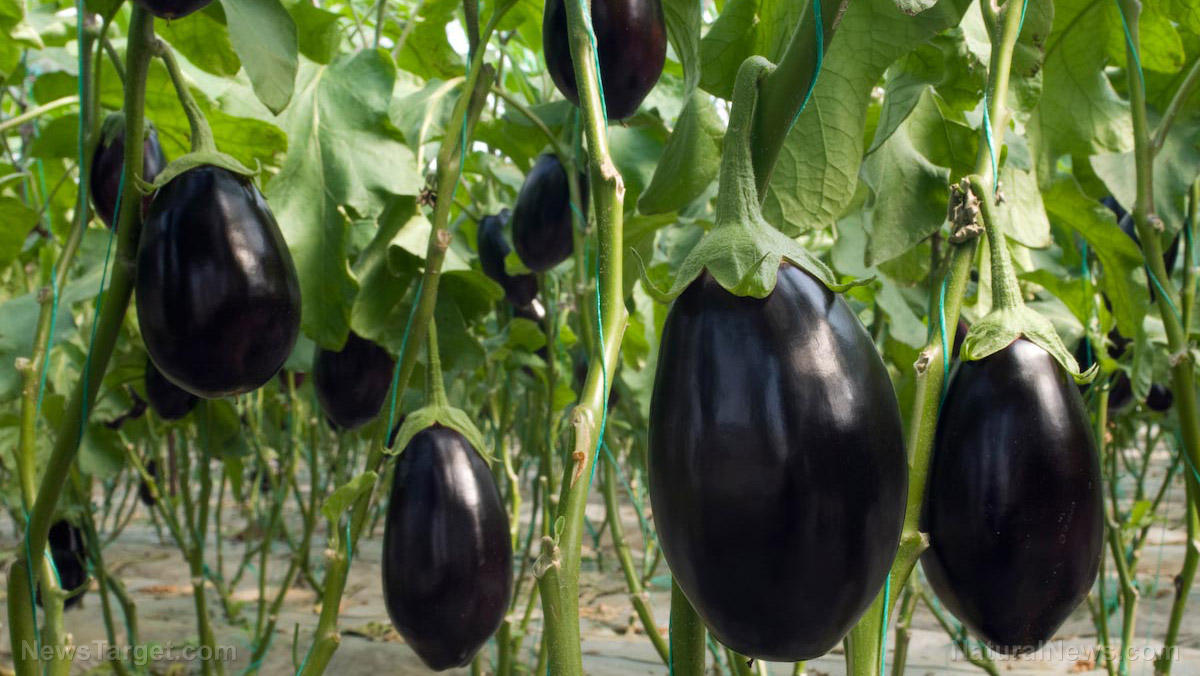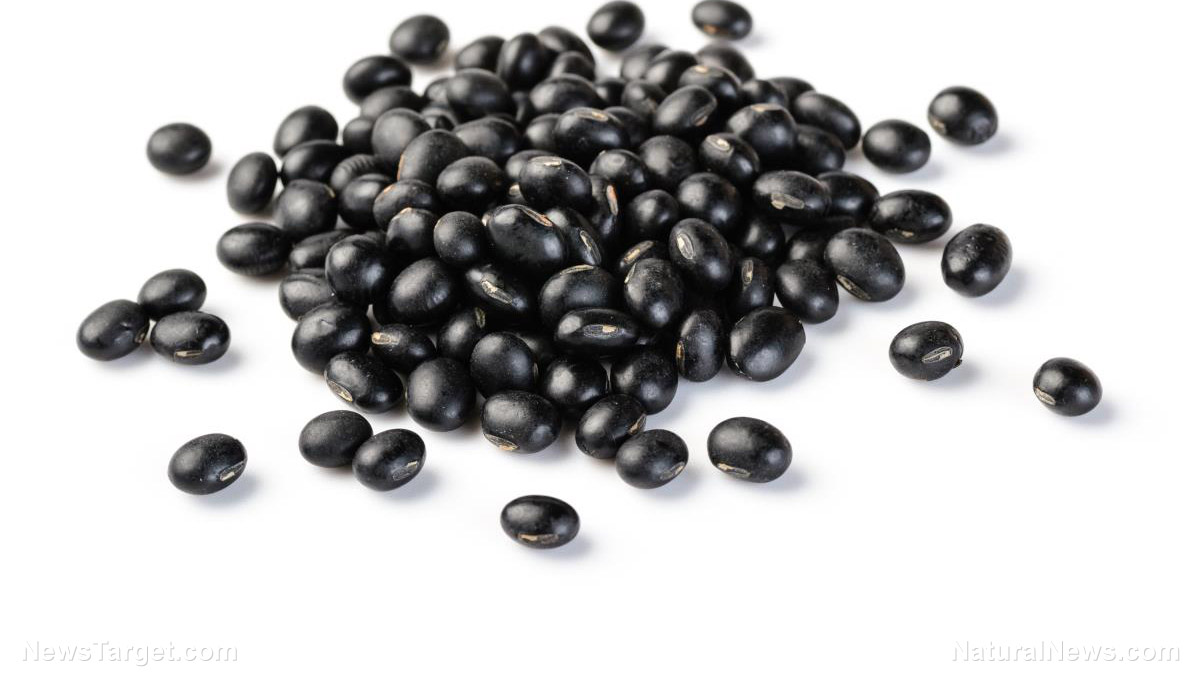Eggplant: The humble superfood that can boost your antioxidant defenses
08/12/2025 / By Laura Harris

- Eggplant is low in calories but rich in fiber, vitamins, minerals and antioxidants like nasunin and anthocyanins, supporting heart health, digestion and cell protection.
- Native to India and Southeast Asia, eggplant has been cultivated for over 2,000 years and is now integral to Mediterranean, Middle Eastern and Asian cuisines.
- While raw eggplant contains solanine (a potential irritant for some), cooking reduces levels of this compound, making eggplant safe to eat for most people. Healthier cooking methods also minimize oil absorption.
- Due to moderate pesticide risk, choosing organic eggplant is recommended. Washing and peeling can also reduce pesticide exposure, though peeling removes some antioxidants.
- Eggplant’s versatility shines in dishes like baba ganoush, moussaka, Szechuan stir-fries and eggplant parmesan. Eggplant is a flavorful and healthful addition to diverse diets.
Eggplant (Solanum melongena), often overlooked in the realm of superfoods, is a nutritional powerhouse that deserves the spotlight. This versatile vegetable, known for its deep purple hue and spongy texture, is not only delicious but also brimming with essential vitamins, minerals and antioxidants. Whether grilled, roasted or blended into dips, eggplant offers a wealth of health benefits that can enhance physical well-being and longevity.
Eggplant belongs to the nightshade family alongside tomatoes, potatoes and bell peppers. Its origins can be traced back to ancient India and Southeast Asia, where it was first cultivated over 2,000 years ago. From there, the eggplant spread to the Middle East and Mediterranean regions, becoming a staple in Italian, Greek and Middle Eastern cuisines.
Interestingly, early European varieties were small, white and egg-shaped, hence the name “eggplant.” It wasn’t until later that the deep-purple, elongated version of the eggplant became dominant. Today, eggplants come in various shapes, sizes and colors, including white, green and even striped varieties.
Nutritional profile and health benefits
Eggplant is low in calories but rich in fiber, vitamins and phytonutrients. Here’s a breakdown of its key nutritional benefits: (Related: The top 3 health benefits of eggplant.)
Rich in antioxidants
- Eggplant contains nasunin, a potent antioxidant found in its skin that helps protect cells from oxidative damage. It also boasts anthocyanins, the same compounds that give blueberries their health-boosting properties.
High in fiber
- With about 2.5 grams (g) of fiber per cup, eggplant supports digestive health, regulates blood sugar and promotes satiety, thus helping with weight management.
Good source of essential vitamins and minerals
- Vitamin C (immune support)
- Vitamin K (bone health and blood clotting)
- Potassium (heart function and blood pressure regulation)
- Folate (important for cell growth and metabolism)
Low-calorie
- With just 20 calories per 100 g, eggplant is an excellent addition to any diet, especially for those looking to maintain or lose weight without sacrificing nutrition.
Eggplant is overwhelmingly beneficial to eat for most people. However, some concerns arise due to its solanine content. Solanine is a compound found in nightshade vegetables that, in excess, may cause inflammation in sensitive individuals. Cooking eggplant significantly reduces solanine levels, making it safe to eat for most.
Eggplant ranks moderately on the Environmental Working Group’s (EWG) Dirty Dozen list, meaning it may contain pesticide residues. Common pesticides found in conventional eggplant include chlorpyrifos (linked to neurological issues) and acephate (a potential carcinogen). Heavy metal contamination is rare but possible if grown in polluted soil.
To minimize exposure, opt for organic eggplant and wash the vegetable thoroughly under running water prior to cooking. Peel the skin if concerned about residues (though this removes some antioxidants).
Culinary versatility of eggplant
Eggplant’s mild, slightly bitter flavor makes it adaptable to countless dishes. Here are some recipes to try:
Mediterranean and Middle Eastern dishes
- Baba ganoush – A smoky eggplant dip with tahini, garlic and lemon.
- Moussaka – A Greek layered dish with eggplant, minced meat and béchamel sauce.
- Ratatouille – A French vegetable stew featuring eggplant, zucchini and tomatoes.
Asian cuisine
- Szechuan Eggplant – Spicy stir-fried eggplant with garlic and chili.
- Japanese Nasu Dengaku – Miso-glazed roasted eggplant.
Italian classics
- Eggplant parmesan – Breaded, fried eggplant layered with cheese and marinara.
- Caponata – A sweet-and-sour Sicilian eggplant relish.
Grilled and roasted options
- Grilled eggplant steaks – Marinated in olive oil, garlic and herbs.
- Stuffed eggplant – Filled with quinoa, lentils or ground meat.
Eggplant is more than just a culinary delight – it’s a nutritional superstar that supports heart health, digestion and antioxidant defense. Whether you enjoy it grilled, baked or blended into dips, incorporating eggplant into meals is a delicious way to boost wellness and nutrition.
This story is not medical advice and is not intended to treat or cure any disease. Always consult with a qualified naturopathic physician for personalized advice about your specific health situation or concern.
For more fascinating insights into superfoods and their natural wonders, visit NaturalNews.com. It’s a treasure trove of articles that will deepen your understanding of the healing power of food.
If you’re into cutting-edge technology with a health twist, try Brighteon.ai. Created by Mike Adams, the Health Ranger, this AI model is a free download that you can run on your own device. It’s all about sharing knowledge freely and bypassing the filters of censorship.
And if you’re looking for a place to openly discuss everything from nutrition to natural remedies without any holds barred, Brighteon.com is your go-to spot. Don’t forget to check out their free speech social media platforms, Brighteon.IO and Brighteon.social, where the conversation is always lively and uncensored.
Watch this video to learn how to lose belly fat naturally with Eggplant water.
This video is from the Natural Cures channel on Brighteon.com.
More related stories:
The mighty Eggplant: An underrated superfood with ancient roots.
Springtime superfood swaps: Seasonal flavors to brighten your plate.
These foods are best eaten with their skins on.
Sources include:
Submit a correction >>
Tagged Under:
#nutrition, antioxidants, eggplant, food cures, food is medicine, food science, functional food, grocery cures, health science, ingredients, natural health, nutrients, organics, phytonutrients, Vegetable
This article may contain statements that reflect the opinion of the author





















